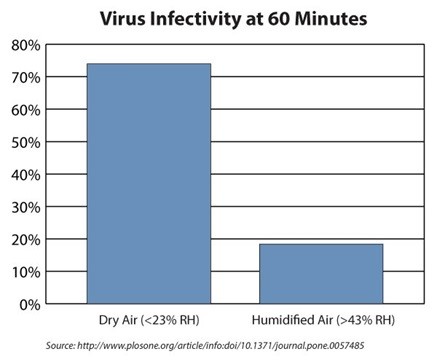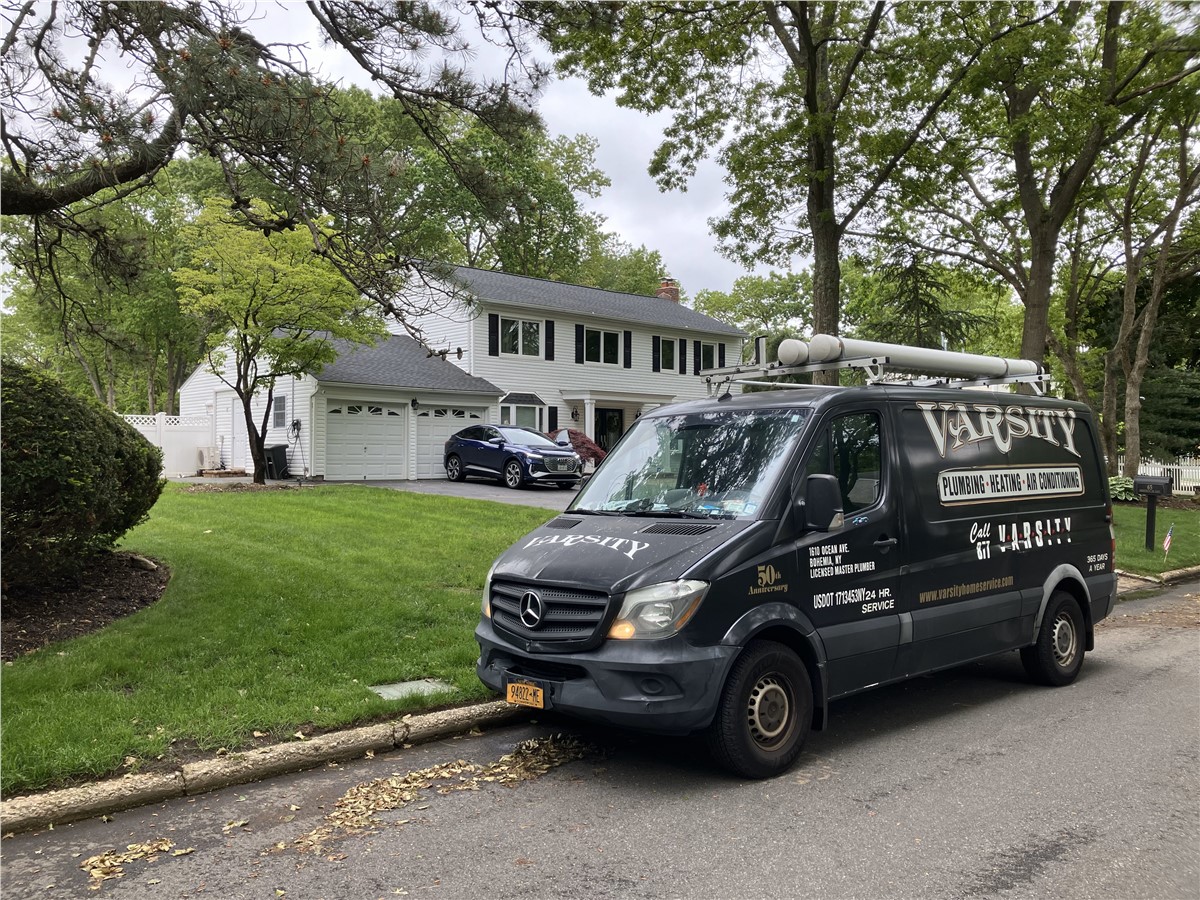
A Guide to Indoor Air Quality
Most people are well-aware that environmental pollutants are an important concern that can pose serious risks to human health. However, there is far more limited awareness of the fact that indoor air can be 2-5x more polluted than the outdoor air. Just one cubic foot of indoor air can contain more than 30 million pollutants—which is 100 times more than the air outside. Fortunately, indoor air quality is something that we can control. Read on to learn more about what it is, its causes and effects, and how it can be improved.
What is indoor air quality (IAQ)?
Indoor air quality simply refers to the content of the air inside of buildings (including homes), in relation to its effect on the health and comfort of occupants.
Why is indoor air quality important?
Research shows that most people spend approximately 90% of their time indoors. Exposure to indoor air pollution, with its higher levels, can pose a greater health hazard than that of the outdoors. Airborne contaminants can cause both short-term health symptoms (headaches, difficulty breathing, dry eyes, fatigue, etc.) and long-term health problems (such as nerve damage, chronic respiratory conditions, heart disease, birth defects, or cancer).
In fact, the American College of Allergists has stated that 50% of illnesses are caused or aggravated by poor indoor air quality - and that includes colds, flu, allergies and asthma. Because of these risks, it is vital to make the air in homes and buildings clean and safe.
What causes indoor air problems?
There are many sources of air pollutants in the home that release gases or particles into the air, thus compromising its purity. With varying emission levels and hazard ratings, these include the following:
- Allergens & organisms Examples: viruses, bacteria, pet dander, pollen, dust, mold
- Combustion sources Examples: oil, kerosene, gas, coal, tobacco products
- Building materials and furnishings Examples: newly installed flooring or upholstery, cabinetry or furniture made of certain pressed wood products, insulation contaminated with asbestos
- Household cleaning and maintenance products Examples: air fresheners, candles, detergents and bleach, paints and stains, caulks and adhesives
- Personal care products Examples: perfume/cologne, shampoo and hair sprays, deodorants and powders, makeup, nail polish
- Hobbies and activities Examples: cooking, smoking, crafting, painting
- Excess moisture environments Examples: damp carpet, wet bathtub or shower area
- Outdoor sources Examples: radon, pesticides, allergens, pollutants
How can I clean my indoor air?
Indoor air quality is a topic that needs to be talked about more every day… but the conversation is even more important during a health crisis like the coronavirus. Researchers have found that viruses can hang as droplets in the air for several hours, and COVID-19 is no exception. The threat of illness increases with lack of proper indoor air quality management because these viruses can get trapped in your home and quickly spread.
But how do you sanitize your indoor air? The good news is there are several HVAC system solutions that can help purify the air throughout your whole home.
Air Purifiers, Air Scrubbers & Ionizers:
Air purification systems are not one-size-fits all, so it’s important to understand the level of purification each product provides. Standard air system filters do NOT protect against viruses due to the extremely small size of virus particles. Only air purification systems with the highest efficiency can consistently remove particles of the smallest size (under 1 micron), such as bacteria and viruses. These high-efficiency air purification systems can be built into your existing HVAC system to provide whole-home purification by trapping airborne virus-sized particles, ultra-fine particles, bacteria-sized particles and fungi, pet dander, respirable dust, tobacco smoke, smog, as well as airborne pollen, mold and spore-sized particles. This process removes harmful particles from the air that is cycling through your HVAC system.
Ultraviolet Light:
Since the 20th century, many scientific research studies have shown that broad-spectrum germicidal UV light is highly effective at killing bacteria and viruses by destroying the molecular bonds that hold their DNA together and making the organism unable to replicate. In fact, standard germicidal lamps emitting a broad spectrum of wavelengths (from about 200 to 400 nanometers) have been used to decontaminate surgical equipment for years. Ultraviolet lamps can be used within your HVAC system to neutralize airborne viruses, mold, bacteria, and flu as they circulate through your home’s ductwork. Each molecule of air will pass over the lamp several times a day - which helps keep your indoor air consistently purified. UV lamps are also one of the most compatible types of indoor air quality products to install within an existing HVAC system because they are available in many different sizes.
Ventilation:
Today’s modern homes are tightly sealed for energy efficiency - this can help save money on energy bills, but the problem is tightly sealed homes trap stale air that contains contaminants (including bacteria and viruses). What’s more, this contaminated air can get recirculated throughout your home through your HVAC system. Ventilation solutions maintain temperature and energy efficiency in your home, while exchanging the stale, contaminated air with fresh, clean air.
You may be wondering … can’t I just open my windows to ventilate my home? Of course, but keep in mind that outdoor air contains pollutants and allergens too. If you have family members that suffer from respiratory issues or allergies, it may not be the best solution to circulate unpurified outdoor air through a window that can contain pollen, mold spores, dust, airborne pollutants and more.
Humidity Level:
Research has shown that cold and flu-causing viruses thrive in low humidity. What’s more, dry air can make people more susceptible to infection by drying out the mucus that normally coats the nose and airway. On the other hand, too much humidity creates a breeding ground for mold and mildew and can contribute to a home's structural damage from excess moisture - so it’s important to strike a balance in the humidity level of your home. According to research in the Environmental Health Perspectives, maintaining a home’s humidity level between 40% and 60% can reduce adverse health effects associated with airborne-transmitted infectious bacteria and viruses. This level of control can be achieved simply with whole-home humidifiers and dehumidifiers.

How can I maintain my indoor air quality over time?
Even outside of a health crisis, the unsettling truth is the air inside your home could be more harmful to your family than the air outside. It is important for every homeowner to take steps to improve and regularly maintain their indoor air quality to reduce the chances of adverse health effects.
- Keep It Clean: A cleaner home is a healthier home. Reducing the accumulation of pet dander, dust, and mold is crucial for maintaining proper indoor hygiene. Clear the clutter that attracts dust. Vacuum carpets weekly with a vacuum cleaner equipped with a HEPA filter. Regularly wash bedding, drapes, and upholstery. Use dust mite proof covers on pillows and mattresses. These are all small habits that will make a big difference.
- Make Product Swaps: Standard household cleaning and maintenance products are filled with toxic chemicals. Consider switching to natural cleaners such as vinegar, baking soda, and water whenever possible. Always read ingredient labels and choose products with low or no volatile organic compounds (VOCs). Additionally, in personal hygiene and beauty products, opt for fragrance-free to avoid the harmful chemicals hidden behind the word “fragrance” or “parfum” on ingredient labels. For a great resource on simple changes you can make, visit www.ewg.org/healthyhomeguide
- Maintain Your HVAC System: Opt for HEPA (high-efficiency particulate air) filters, and change your filters regularly. The frequency is dependent on the type of filter you have as well as the occupancy and activity in your home. A general recommendation is every 3 months. However, homes with pets should consider changing it more frequently. For those with family members who suffer from allergies or with respiratory issues, changing your filter every month may be necessary. Be sure to also have your system routinely maintained by an HVAC professional to ensure safe and proper operation.
- Invest in Air Purifying Technology: There are a variety of options available for your HVAC system to effectively cleanse the air and remove contaminants, including HEPA (high-efficiency particulate air) filters, UV lamps, air scrubbers, ionizers, ventilation systems, activated carbon, and more. Filters trap harmful particles such as spores, dust mites, pet dander, pollen, and tobacco smoke. Upgrading to an efficient premium filter is recommended, as standard filters typically only trap the largest particles. Regardless of which methods you choose, it is tremendously beneficial to harness the power of this technology for whole house protection against indoor air pollution.
The more you know, the better equipped you are to maximize your health!
By making some simple changes that will reduce exposure to pollutants, you can create an environment with cleaner and safer air for your family to breathe. For recommendations regarding air purification for your own home, call Varsity Home Service to set up a consultation with an indoor air quality professional.
Sources Referenced:
American College of Allergists
American Lung Association
Centers for Disease Control and Prevention
Columbia University Irving Medical Center
Environmental Health Perspectives
Environmental Working Group
Harvard Health Publishing
National Health Commission & State Administration of Traditional Chinese Medicine
U.S. Consumer Product Safety Commission
U.S. Environmental Protection Agency

Subscribe to Varsity Home Service's Blog







